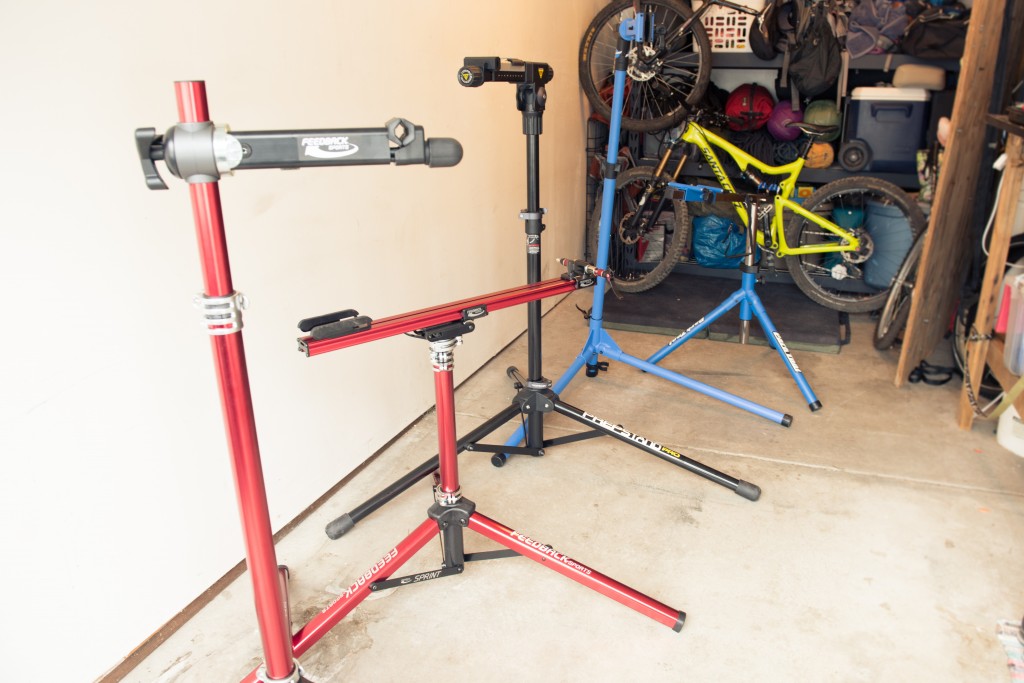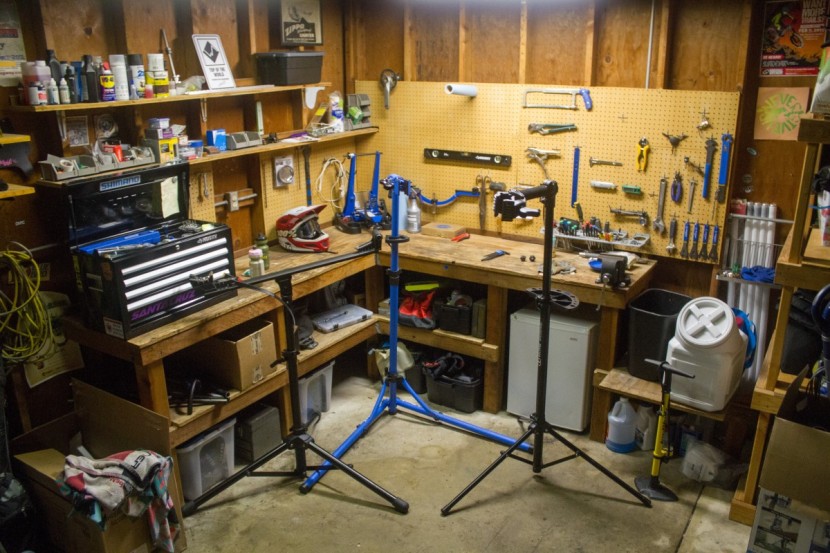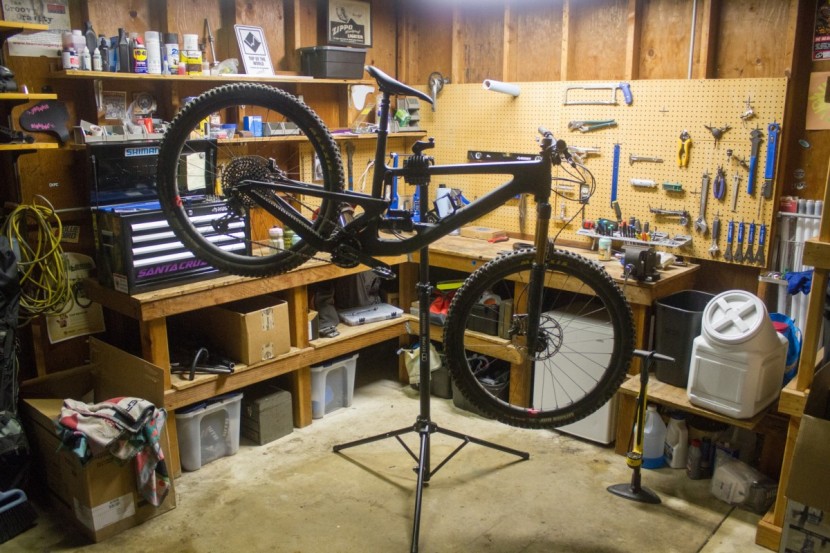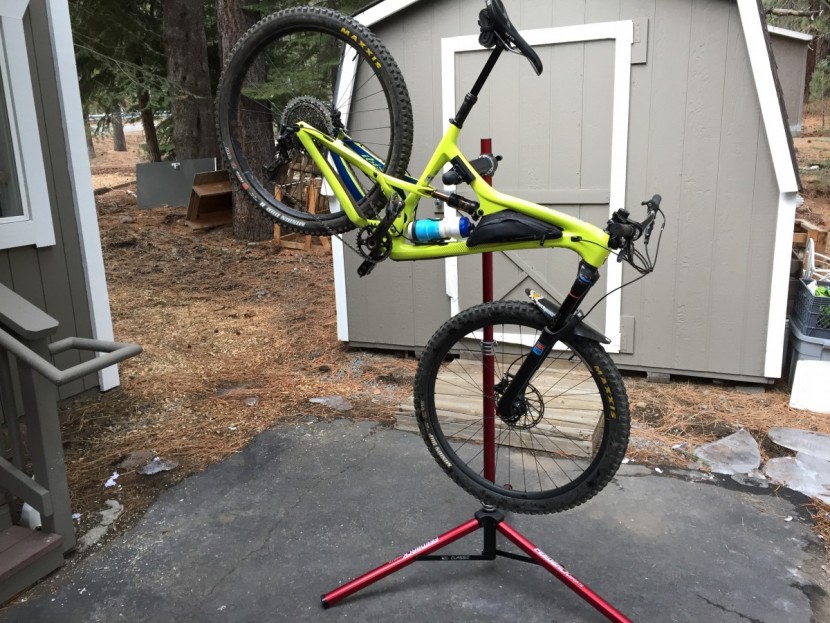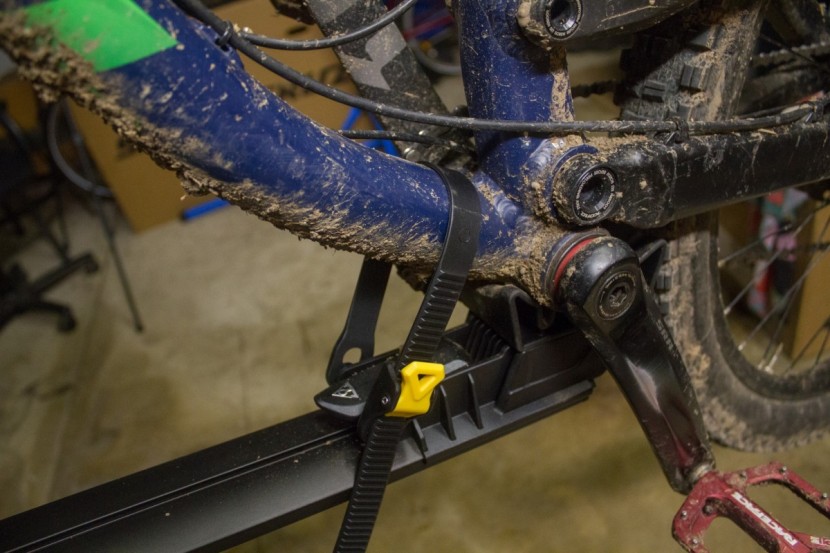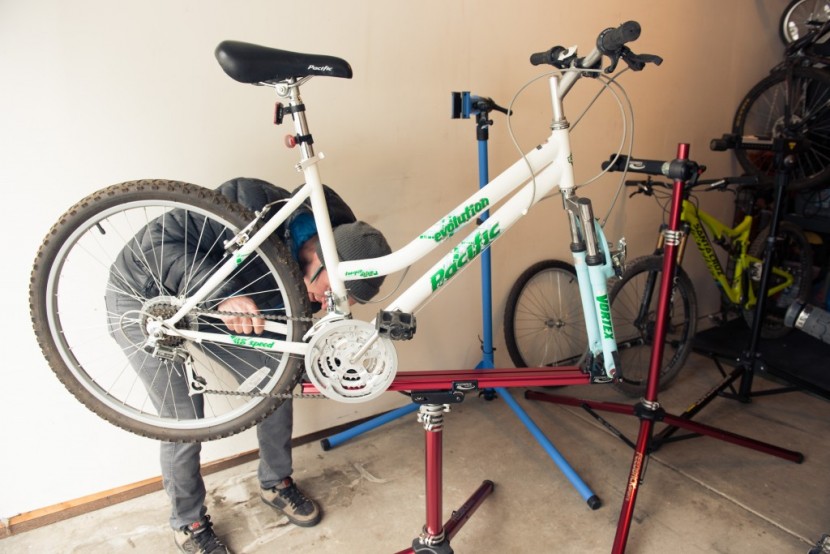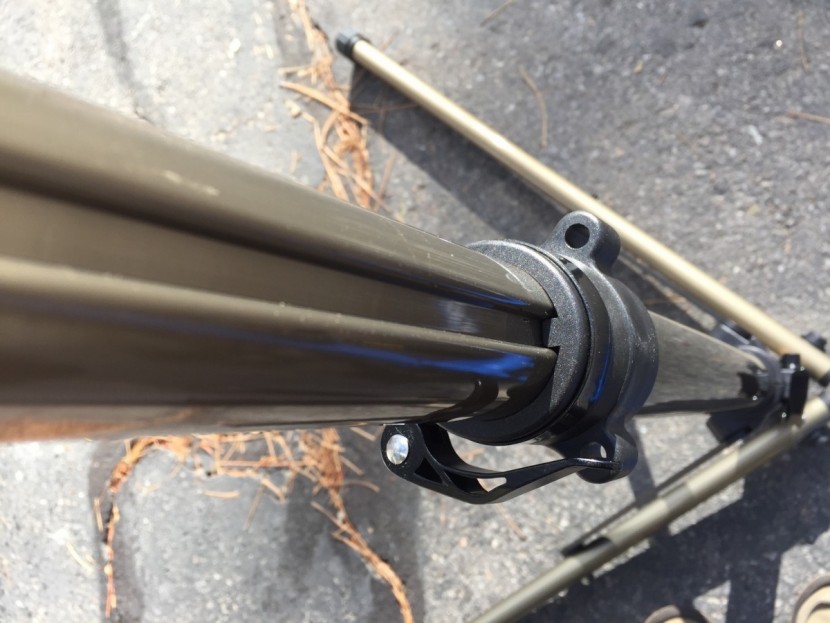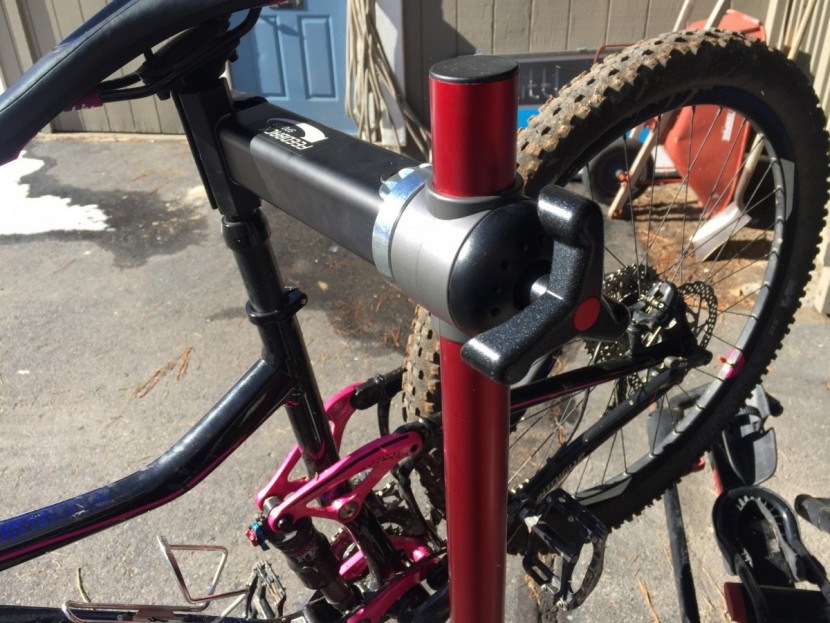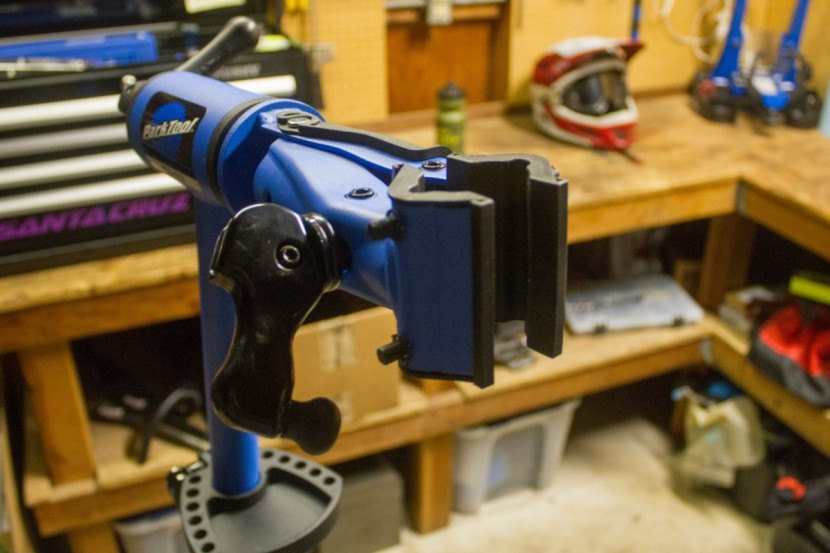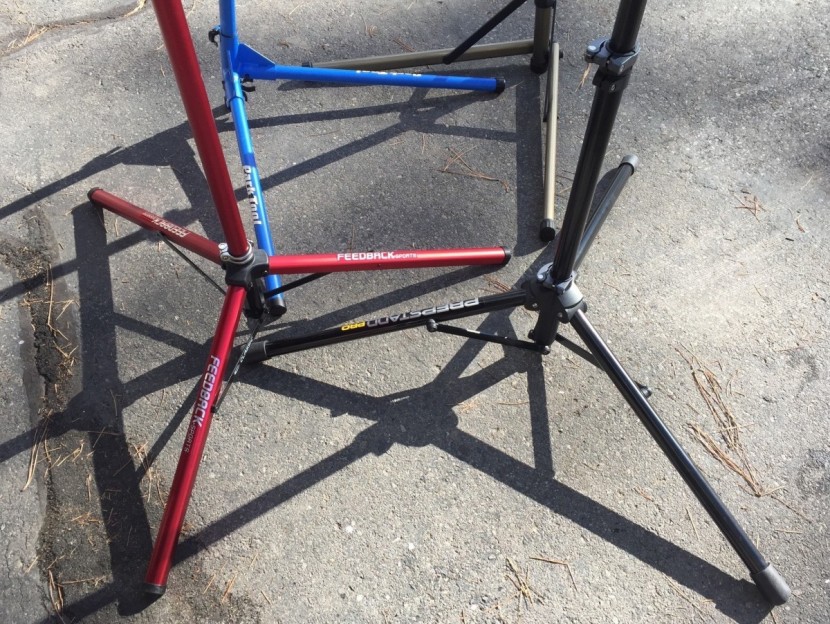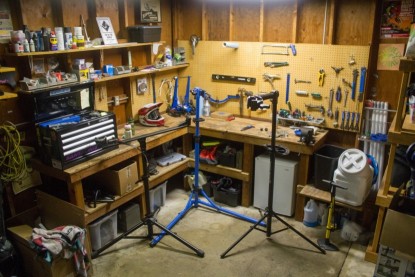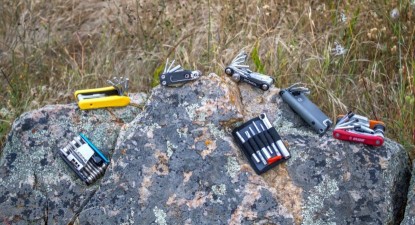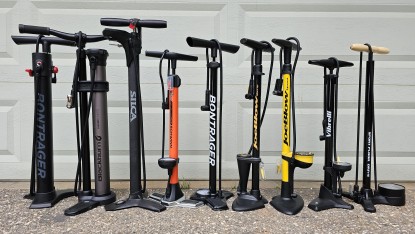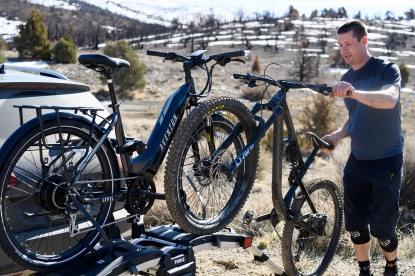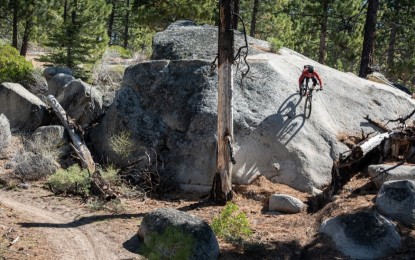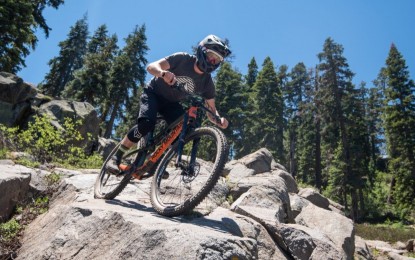Do you Need a Bike Work Stand?
If you're here researching bike work stands, then we're guessing you've come to the realization that it could be a great addition to your garage, shed, outdoor, or travel workspace. Maybe you've spent countless hours with your bike flipped upside down while trying in vain to adjust your derailleur, or perhaps you've lost one too many small bolts in the grass behind your house. It can be incredibly difficult and frustrating to work on your own, your kid's, or your spouse's bike with it upside down or leaning against a wall, we know, we've done it hundreds of times. If only we'd invested in a quality work stand the moment we got our first bike. Just thinking of the time, money, and frustration we could have saved ourselves makes us all feel a little bit crazy.
Don't get us wrong, we love our local bikes shops. Even with a work stand of our own we still take our rigs there all the time to take care of the repairs we aren't willing, able, or qualified to do ourselves. The services bike shops provide are important, indispensable, and we would be lost without them. That said, there's plenty we can do on our own, and a quality work stand is a simple upgrade that enhances our ability to do everyday routine maintenance tasks or more involved repairs. Even if all you ever do is pre- and post-ride chain lubing and bike washing, a work stand can make those tasks easier and more efficient, dramatically improving your experience. If you're already a capable home mechanic, then you know just how important it is to get your bike off the ground and positioned in a way that makes both simple and complicated repair and maintenance tasks easier.
Once you finally own a bike stand, you'll kick yourself for not buying one sooner. More than likely, you won't only use the stand when your bike is broken. Rather, you'll wind up using it almost every time you ride your bike. In fact, we found that most of the time when our bike was clamped in a stand, we were doing routine, everyday maintenance.
Types of Bike Work Stands
There are two main styles of bike works stands; toptube/seatpost clamping or axle/bottom bracket mounting. Several factors will play into deciding which type of stand is right for your particular needs. If you're like us, then you own more than one bike. The kid's BMX bike, the wife's commuter, and your mountain bike all take up space in the garage. Maybe you're a mountain bike racer who also grinds out serious mileage on a road bike to stay in shape. While you may not have any reservations about clamping the top tube of a cheap BMX bike into the jaws of a work stand, you may cringe at doing the same with your $8000 carbon road frame.
Bikes are so specific to certain types of riding these days that the sleek, blade-like shapes of a time-trial bike just won't fit in a top tube/seatpost clamping work stand. Quick release skewers make wheel removal a fast and easy task. One of the stands we reviewed, the Feedback Sports Sprint is the axle/bottom bracket mounting variety. This style of stand requires the removal of either the front or back wheel to secure the bike in the stand. While this is easily accomplished with quick release equipped bikes, BMX bikes and beach cruisers often require the use of a crescent wrench to remove the nut that holds the wheel in the dropouts. For simpler tasks such as cleaning or lubing, wheel removal on a bike without quick release axles may prove too time-consuming relative to the overall job. Bikes without quick release axles could wind up leaning against a wall or flipped upside down for repairs if you choose the wrong stand for your needs.
Toptube/Seatpost Clamping Work Stands
Top tube/seat post-clamping work stands are typically more popular and definitely the more versatile type of stand. Again, this all depends on the bike(s) you own, but most bike shops use professional versions of this style of stand. Since the typical bike shop sees a greater variety of bikes come through their door in a week than you're likely to ever work on in your lifetime, there's a good chance this type of stand will suit your needs. They are convenient and easy to use because wheel removal is not required for these stands, making them a great choice for cleaning, lubing, and quick pre and post-ride adjustments.
Not having to go through the process of removing and replacing a wheel allows the rider to quickly test ride repairs and make adjustments accordingly. Bikes can be finicky. Pesky derailleur adjustments requiring the bike to be in and out of the stand multiple times in order to pedal down the street would be really annoying if the wheel had to be replaced each and every time.
In recent years, the width and size of the front axle on bikes have changed. 20mm and 15mm thru axles are now common on higher-end mountain bikes. Rear axle “standards” have also changed and continue to do so. Next season, a whole new size will probably exist if it already doesn't. Perhaps you've had to purchase an adapter that allows your new mountain bike to ride on your old car roof rack. The beauty of a seat post/top tube clamp style work stand is that none of that matters because you're just clamping onto the seat post or top tube of your frame.
One of the few reservations cyclists have with top tube/seat post clamp style stands is clamping a carbon frame. Yes, you can clamp a carbon frame in a bike stand, we do it, and bike shops also do it all the time. Yes, you can destroy a carbon frame by clamping it too tightly in a work stand. If you exercise caution, you'll probably never do it, but it can happen. Be familiar with how your chosen stand clamps and be careful not to over tighten it. If this scares the living daylights out of you, maybe you're more comfortable with taking the extra minute to remove your wheel and are better suited with an axle/bottom bracket mounted work stand.
One of the great things about seat post/top tube clamp style work stands is that you have options as to where you clamp your frame. Don't have enough seat post showing to clamp? Try the top tube. Have four different bikes with different axle sizes? No problem! This style of work stand fits a variety of tube diameters and shapes, and the height and angle of the clamp arm can be adjusted every which way to put the bike in the most ideal position for the repair or maintenance you are performing. Unless you have a very specialized and potentially fragile frame, this type of stand is probably the way to go. If you do have a ten thousand dollar road bike that you live in fear of damaging, then perhaps an axle/bottom bracket mounting stand is the right choice for you.
Axle/bottom bracket mounting workstands
If you're sitting at your computer in head-to-toe Lycra and a helmet that would make Darth Vadar jealous, start paying attention. All those bike mechanics working next to the wrapped Sprinter van at your local crit race are probably spinning bikes back and forth on axle/bottom bracket mounted work stands. Sure they had to remove a carbon wheel to mount it, but the stability afforded by these type of stands is a small trade-off. When they're putting their full weight into the wrench to free a seized bottom bracket that some guy with tree trunks legs just turned into metal shavings, it's nice to know the bike won't fall over and the clamp won't torque on your frame or seat post. Over-clamping carbon frame tubes is a non-issue with these stands. Also, bikes with very oddly shaped or aerodynamic frame tubing are best suited to these types of stands.
Aside from having to remove a wheel to mount a bike on this style of stand, modern bikes have a great variety of axle diameters and widths these days. Depending on the size of your axle, you may need to purchase adapters to accommodate different bikes and axle sizes.
Building a bike from the ground up is a great application for an axle/bottom bracket mounting work stand. One of the most distinguishing features of this type of stand is the ability to spin the bike, affording easy access to both sides of the bike without having to move yourself. With a top tube/seat post work stand, one must either remove the bike and flip it around or move and deal with the stand possibly being in the way of the intended repair.
Accessories
Accessories that are often available and may be worth the added expense include carry bags, included with the Topeak Prepstand Pro, and tool trays, included with the Bike Hand YC-100BH. Tool trays hold tools and small items like screws and bolts conveniently within arm's reach and reduce the ever-present risk of misplacing or dropping tools or small parts. Tool trays are such a helpful accessory that we think it's unfortunate they don't come standard with every work stand.
Features
While work stands are all relatively similar in design and function, there are several features that help to differentiate between the different models and their performance. These features include the clamp, height adjustment, angle adjustment, stability, and portability.
Height Adjustment
The majority of work stands have a height adjustment where the upper portion of the main tube slides out of the lower portion and can be secured with a quick-release lever. The amount of adjustability varies between the different models but most have between approximately 15"-30" of adjustment so you can orient the bike at the perfect height for the repair at hand. The best models have sturdy fixtures that hold the stand securely at the desired height.
Angle Adjustment
Work stands also typically have angle adjustment that allows the user to rotate the clamp arm to the desired position so that the clamp is at the appropriate angle to clamp and hold the bike. Most clamp arms have 360 degrees of adjustment, but the different brands achieve it in different ways. Some models rotate smoothly while others have an indexed circular ring of teeth that helps to hold them in place. While both styles tend to work well, the smoothly rotating designs are usually a little more user-friendly and allow for adjustments to be made with the bike in the clamp. The knob that controls the clamp arm also makes a difference, and the best models have knobs that are easy to grasp, turn, and torque down on.
Clamp
The clamp is the only interface between your work stand and your bike and is another feature that we feel really sets them apart from each other. The best clamps have wide curved jaws that are covered with a non-marking grippy rubber that apply even pressure over their length and hold your bike securely. User-friendliness is another major factor that we feel is incredibly important. The ability to get your bike in and out of the stand quickly and easily affects our likeliness to use a work stand regularly. The best clamp designs allow the user to close and open the jaws quickly with minimal turning of knobs. These styles of clamps often have slide locking or quick release features with knobs to fine tune the tension on the jaws. Clamps also fit a varying range of tube diameters and sizes. The majority of places you clamp your bike fall within the 1"-2" range and most clamps open wide enough to accommodate most normal tube diameters. Some clamp jaws open wider than others, so this is something worthy of consideration when comparing the different models.
Stability
The stability of a work stand is an important factor that varies between the different models based on their design. We think that the more stable a work stand is the better, helping to prevent damage to your bike(s) or injuring anyone. The stability of a particular work stand varies on the size of its footprint, height, the weight of the bike, the positioning of the weight, and the forces applied to the bike in the stand. Work stands also come with varying weight limits, anywhere from 55-100 lbs depending on the model. We feel that it is important to consider the weight of the bikes you own, as well as the likelihood of you applying serious torque or wrenching forces to the bike in the stand when you're researching different models.
Portability
Most home mechanic work stands are portable and collapse down to a smaller size for storage or travel. The lighter the weight and the smaller a work stand's collapsed size, the easier it is to store in your home or toss into your vehicle to take on a road trip or to the weekend races. All of the stands we tested are quite portable, although they all vary slightly in weight and collapsed size.
Conclusion
There's a lot to take into consideration when buying a bike work stand. We hope that our detailed comparative analysis will help you find the stand that's right for you. Check out our best-in-class review of bike work stands to find out more.

